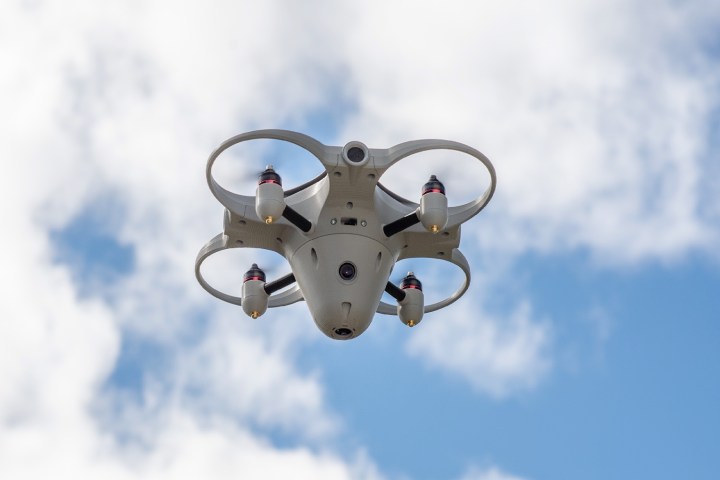
One of the cool things about this job is that we get to track the progress of technologies from far out, sci-fi sounding concepts to far out, sci-fi sounding reality. Few startups better illustrate this than Sunflower Labs. When we first wrote about this startup in 2016, it had just announced its goal of creating an intelligent outdoor sensor-based security system, capable of dispatching a camera drone to check up on any unusual disturbances. Jump forward a few years to CES 2019 and Sunflower is officially showing off its Bee and Sunflower technology (read: drone and smart sensors) for one of the first times in public.
More CES 2019 coverage
- This futuristic autonomous pod hotel drives you around as you sleep
- AirSelfie makes a course correction at CES 2019 with 3 new selfie drones
- Sphero’s Specdrums let you drum up a symphony of sound with colors
- Food 2.0: Impossible Foods is back with a bloody new non-beef burger
So what changed in the last two years? “Nearly everything,” Alex Pachikov, a former Evernote executive and founder of Sunflower Labs, told Digital Trends. “When we announced our system two years ago, we only had the idea, some renderings, and a very early prototype. Since then, we were able to secure a significant round of funding, assemble a world-class team, and build the fully functioning system that we have been showing live. We have also solved countless challenges associated with operating and manufacturing our system, and built out a network of partners to help us get this product to market.”
This has involved developing the various key components required to make the system work, such as autonomous landing, self-charging, target-tracking, path-planning, collision avoidance, and video streaming and processing. It seems that things have worked out nicely, however, because Sunflower Labs’ concept is now on display at CES as part of the so-called “Home of Drones” pavilion.
Hopefully, it won’t be much longer before these things are deployed at residences around the world — albeit the kind of residences we probably won’t be able to afford. Things could change over time, though.
“We are initially targeting high-end residential properties because this is where our system brings the most differentiated value,” Pachikov continued. “Since we are building a dynamic outdoor observation system, it makes sense [for] properties that cannot be easily covered with a couple cameras. But our technology is fairly broadly applicable and in the future, we plan to expand our offering for any type of property: Residential, commercial or industrial.”


